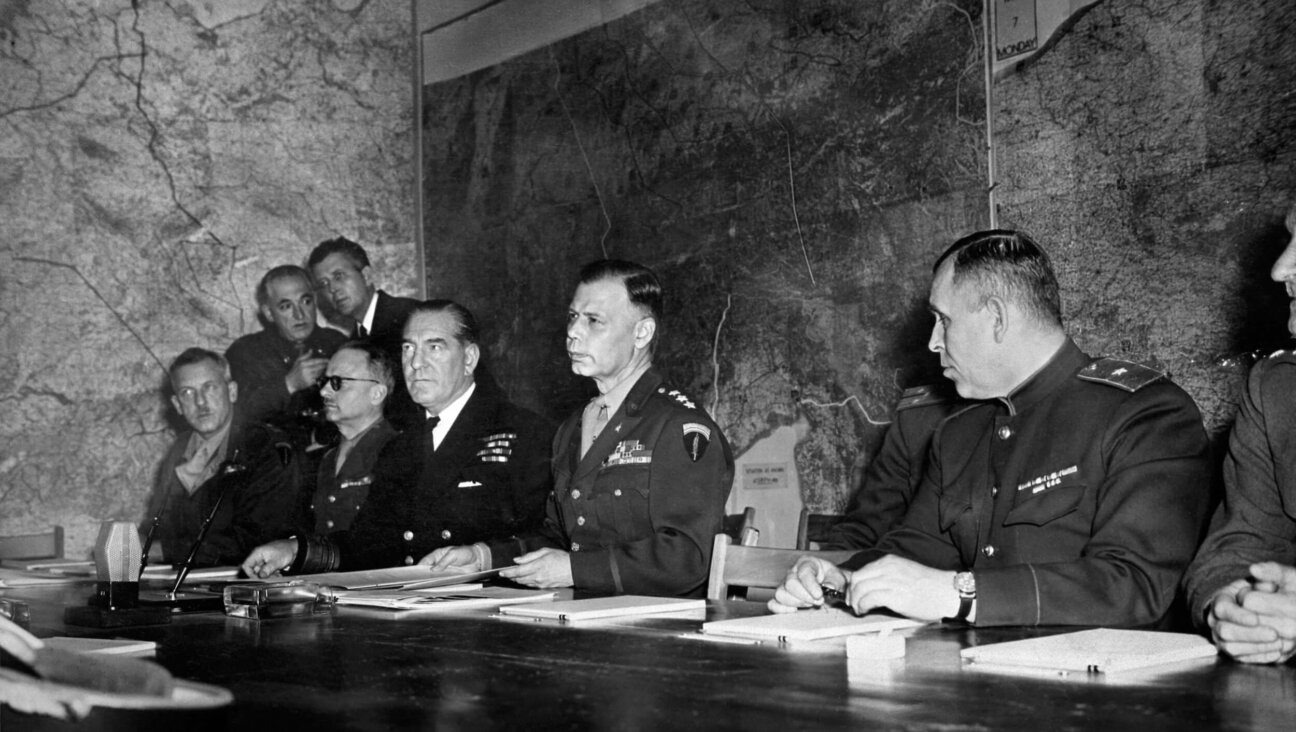No, New York Times, Massacres Aren’t Funny

Wow. That’s pretty much the only word that came to mind upon seeing in their spare time.
The shock was quickly replaced with a sudden skin-crawly feeling.
The New York Times is famous for its reputation as the paper of record. Its tone is balanced and measured, its headlines filled with appeasing clauses. Nothing sensational — just the straight news.
And then this: a photograph obtained by Gawker from a Times alumni Facebook page, which depicts opinion editor Andrew Rosenthal posing with a toy M-16 and what I assume is some kind of parody of Nepalese royal dress, standing triumphantly over the listless bodies of his staffers, covered in fake blood.

Image by Facebook
The picture, Gawker reports, is “recreating the Nepalese royal massacre with the ‘dead and dying’ foreign desk.”
The scene is dated June 2001, which as Gawker points out, is the same month in which Nepal’s crown prince Dipendra shot 10 members of the royal family (including himself) with an M-16.
Other photographs obtained by Gawker show Bill Keller, the then head of the foreign desk who would become executive editor of the paper, presiding over the mock suicide of his employees, in a farce based on the Heaven’s Gates cult mass-suicide of 1997.

This all makes me angry, yes. But why?
Is it because of the still-fresh scenes of families mourning the victims of the Charleston shooting? Is it because of my own sensitivity to guns in a newsroom in the aftermath of Charlie Hebdo?
Or is it because it strikes a strange resemblance to old photographs of Nazis standing over the bodies of dead Jews in Ukraine?
How would Jewish readers feel, I wonder, if a newspaper chose to recreate the mass executions of Jews carried out by the Einsatzgruppen? Is one massacre worth more than another?
As someone who works in a newsroom, I can tell you: journalists aren’t always PC. In fact, many things that are casually called out when deadline is looming would make the average person cringe.
But there is a difference between that, and mocking a horrifying event in a way that requires elaborate planning. I mean, those paper hats aren’t sold at Wal-Mart — that sort of thing requires a supply trip, some glue and major arts and crafts skills.
Put another way: tossing out a Jewish joke here and there is not on par with declaring next Wednesday “Holocaust Pajama Day.”

Executions of Jews by German army mobile killing units (Einsatzgruppen) near Ivangorod, Ukraine. Image by Wikimedia Commons
The remorse from the Times has been swift (from some). “These photos are in poor taste, not reflective of the values of The New York Times and deeply regrettable,” Arthur Sulzberger Jr. told Gawker in an email.
As I’m writing this, Andrew Rosenthal has yet to respond to Gawker’s request for comment. Bill Keller, on the other hand, replied, “This is what journalists did with their childish impulses before there was Gawker.”
While the zing to Gawker is applaud-worthy, Keller’s response, like the photos themselves, is in poor taste. Come on, New York Times; don’t make fun of bloody tragedies. Or, if you do, leave the camera at home.
The Forward is free to read, but it isn’t free to produce

I hope you appreciated this article. Before you go, I’d like to ask you to please support the Forward.
Now more than ever, American Jews need independent news they can trust, with reporting driven by truth, not ideology. We serve you, not any ideological agenda.
At a time when other newsrooms are closing or cutting back, the Forward has removed its paywall and invested additional resources to report on the ground from Israel and around the U.S. on the impact of the war, rising antisemitism and polarized discourse.
This is a great time to support independent Jewish journalism you rely on. Make a gift today!
— Rachel Fishman Feddersen, Publisher and CEO
Support our mission to tell the Jewish story fully and fairly.
Most Popular
- 1

Culture Cardinals are Catholic, not Jewish — so why do they all wear yarmulkes?
- 2

Fast Forward Ye debuts ‘Heil Hitler’ music video that includes a sample of a Hitler speech
- 3

News School Israel trip turns ‘terrifying’ for LA students attacked by Israeli teens
- 4

Fast Forward Student suspended for ‘F— the Jews’ video defends himself on antisemitic podcast
In Case You Missed It
-

Opinion This week proved it: Trump’s approach to antisemitism at Columbia is horribly ineffective
-

Yiddish קאָנצערט לכּבֿוד דעם ייִדישן שרײַבער און רעדאַקטאָר באָריס סאַנדלערConcert honoring Yiddish writer and editor Boris Sandler
דער בעל־שׂימחה האָט יאָרן לאַנג געדינט ווי דער רעדאַקטאָר פֿונעם ייִדישן פֿאָרווערטס.
-

Fast Forward Trump’s new pick for surgeon general blames the Nazis for pesticides on our food
-

Fast Forward Jewish feud over Trump escalates with open letter in The New York Times
-
Shop the Forward Store
100% of profits support our journalism
Republish This Story
Please read before republishing
We’re happy to make this story available to republish for free, unless it originated with JTA, Haaretz or another publication (as indicated on the article) and as long as you follow our guidelines.
You must comply with the following:
- Credit the Forward
- Retain our pixel
- Preserve our canonical link in Google search
- Add a noindex tag in Google search
See our full guidelines for more information, and this guide for detail about canonical URLs.
To republish, copy the HTML by clicking on the yellow button to the right; it includes our tracking pixel, all paragraph styles and hyperlinks, the author byline and credit to the Forward. It does not include images; to avoid copyright violations, you must add them manually, following our guidelines. Please email us at [email protected], subject line “republish,” with any questions or to let us know what stories you’re picking up.















